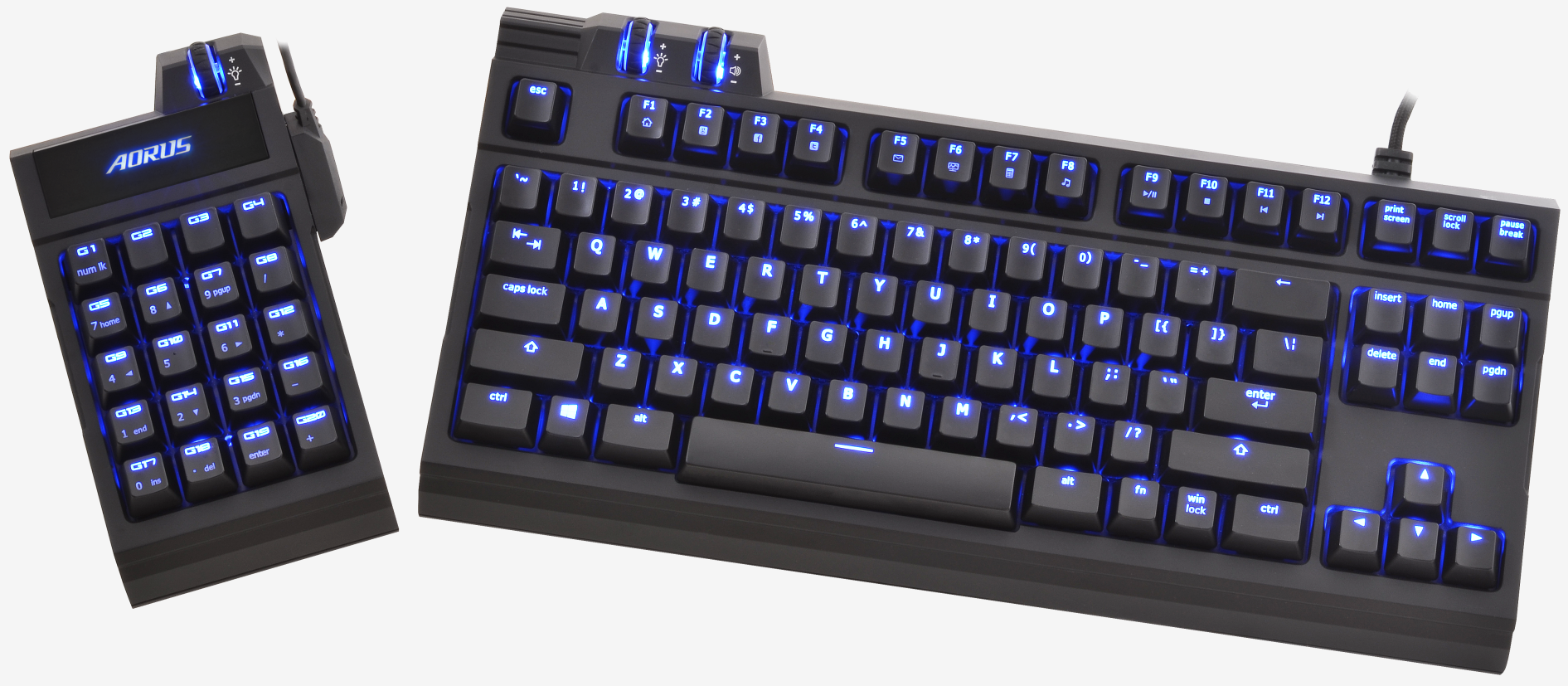Aorus Thunder K7 Mechanical Keyboard, M7 MMO Mouse & P3X Mouse Pad Review
Gigabyte may be best known for its laurels winning motherboards and graphics cards, only the brand is home to a host of power products from estimator cases to entire computers, which includes tablets and laptops. Peripherals are too on Gigabyte's lengthy list of wares, with its Aivia series perchance being the nearly noteworthy and one I've had the pleasure of testing.
As solid as the Aivia Osmium mechanical keyboard and Aivia Uranium wireless mouse may have been when we used them, Gigabyte wanted to develop even more extreme models and to do so the company created a new make, forming a subsidiary company called "Aorus" -- a name that already represents an elite keyboard, mouse and mouse pad as well as a few gaming laptops.
For review we have the Aorus Thunder K7 backlit mechanical gaming keyboard with a detachable macro/numpad, the xvi-button Thunder M7 MMO gaming mouse, and the meter-long P3X gaming mouse pad. With everything unboxed and plugged in, nosotros're fix to observe out what most $300 of Aorus gear is worth when Zerglings come knocking.

Aorus Thunder K7 Detachable Mechanical Gaming Keyboard
The Thunder K7 is an expensive keyboard, though past mechanical standards it's relatively affordable at $150, particularly if you consider that it's meant to be the best of the best. To put that price into perspective, the CM Storm NovaTouch costs $200, the Corsair K95 Cherry MX at $190, the Das Keyboard 4 Ultimate at $180 and at $170 y'all will find the Roccat Ryos MK Pro as well as Razer BlackWidow Chroma.

Despite being more affordable than other upper-cease mechanical boards, the Thunder K7 presents itself equally a no expenses spared kind of production with full anti-ghosting functionality, bicycle-based volume and backlighting controls and a detachable number pad with macro keys.

The detachable pad can exist used as either a number pad or a macro keyboard. The xx keys are fully customizable and allow for on-the-fly programming. Using the Aorus macro engine software gamers tin setup 5 individual profiles for the 20 keys on the detachable pad. Each contour can be color-coded so you know which contour is active.

What is cool about the detachable pad is that it tin can either be continued to the right side of the keyboard or the left side, making it perfect for both lefties and righties. Additionally, using a magnetic cable, the detachable pad can exist used by itself.

Evidently the key (forgive the pun) to whatsoever mechanical keyboard is its mechanical keys, which vary between boards and can impact feedback response and actuation pressure. At that place are iii main types of mechanical keys: linear, or those that simply move vertically without any feedback or clicking racket such as Cherry MX Blacks; tactile, which provide physical feedback when a key is actuated, such as Cherry MX Browns; and tactile with an audible click accompanying the physical bump, every bit offered past Cherry MX Dejection.
Gigabyte has fitted the Thunder K7 with Scarlet MX Red switches, which are linear like Carmine's MX Blackness switches, meaning there is no click or sound associated with pressing them, except Reds require 45g to actuate versus 60g. The switches are rated for l meg clicks while the fundamental caps have been coated in a non-slip wear-resistant UV rubber-Teflon which feels dainty and should help avoid any accidental skid-ups.
Source: https://www.techspot.com/review/902-gigabyte-aorus-thunder-k7-m7/
Posted by: hessfroultan.blogspot.com


0 Response to "Aorus Thunder K7 Mechanical Keyboard, M7 MMO Mouse & P3X Mouse Pad Review"
Post a Comment